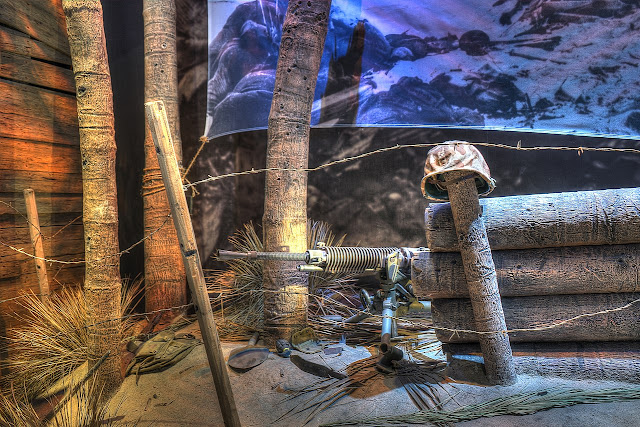La Tipo 92 (九二 式 重 机关 铳 Kyuunii-shiki juu-kikanjuu?), conosciuta soprattutto nella bibliografia in lingua inglese come Type 92, era una mitragliatrice media prodotta in Giappone negli anni trenta ed utilizzata principalmente dall'esercito imperiale giapponese e delle forze collaborazioniste prima e durante la seconda guerra mondiale.
Storia
Negli anni trenta l'esercito imperiale giapponese introdusse una serie di normative atte ad uniformare l'armamento in dotazione ai propri reparti. In quest'ottica la mitragliatrice pesante Type 3, introdotta negli anni dieci del XX secolo, venne modificata nel progetto dal generale Kijirō Nambu in modo da poter utilizzare munizionamento 7,7 × 58 mm Type 92 in luogo del 6,5 × 50 mm Arisaka.
Sviluppo
Nambu introdusse modifiche nell'alimentazione, nel controllo del fuoco e nel sistema di blocco. Dopo le fasi preliminari la nuova arma entrò in servizio nel 1932 nell'esercito imperiale divenendo dotazione standard dei reparti nel periodo prebellico e durante la seconda guerra mondiale.
Impiego operativo
La Type 92 venne ampiamente utilizzata dall'esercito imperiale e dalle forze collaborazioniste prima e dopo il coinvolgimento giapponese nella seconda guerra mondiale.
Al termine del conflitto, le armi catturate vennero ampiamente utilizzate anche dalle truppe dell'Esercito Rivoluzionario Nazionale cinese, da quelle dell'Esercito Popolare di Liberazione e dall'esercito della Corea del Nord durante la guerra civile cinese e la guerra di Corea.
Descrizione tecnica
La Type 92 era essenzialmente una versione in scala maggiorata della Type 3, possedeva un calibro di 7,7 mm, e come la Type 3 era raffreddata ad aria; le munizioni erano in nastri da 30 colpi. I proiettili sparati raggiungevano una velocità iniziale di 732 m/s, mentre la cadenza di tiro era di circa 450 colpi al minuto. Molti definiscono la Tipo 92 una copia della Hotchkiss Mle 1914.
La Type 92 fu a volte adoperata in funzione antiaerea durante la guerra del Pacifico. Venne soprannominata "picchio" da parte delle truppe alleate a causa del suono caratteristico, lento e ripetitivo, che produceva mentre faceva fuoco. La Type 92 possedeva una portata massima di 4.500 metri, ma dimostrava la sua potenza massima fino a 800 metri.
In posizione di fuoco era montata su treppiede, per un peso totale di 55,3 chilogrammi, ed era servita da una squadra di 3 uomini. Spesso era equipaggiata con un organo di mira telescopico.
ENGLISH
The Type 92 Heavy Machine Gun (九二式重機関銃, Kyūni-shiki jū-kikanjū) was a Japanese heavy machine gun, related to the Hotchkiss machine gun series. It entered service in 1932 and was the standard Japanese heavy machine gun used during World War II. Known for its reliability, it was used after the war by various forces in East Asia. Designed by Kijiro Nambu and built by Hino Motors and Hitachi, its total production was about 45,000 guns.
Contents
Design
The Type 92 was essentially a scaled-up version of the Type 3 Heavy Machine Gun, with its calibre increased to 7.7 mm, and like the Type 3 was air cooled, ammo strip-fed, and based on the Hotchkiss M1914. It could use both a rimless and semi-rimmed 7.7x58mm Shiki round. A 7.7 mm round could be used if needed or if other ammunition supplies dwindled. Rounds fired from the gun traveled at about 730 m/s (2,400 ft/s), and the rate of fire was about 450 rpm. It was sometimes used as a light anti-aircraft gun during the Pacific War. It was nicknamed "the woodpecker" by Western Allied soldiers because of the characteristic sound it made when fired due to its relatively low rate of fire, and the "chicken neck" (Chinese: 雞脖子) by Chinese soldiers due to its appearance. The Type 92 had a maximum range of 4,500 meters, but a practical range of 800 meters.
The gun was intended to be fired on a tripod with a team of 3 men. The unusual tripod was designed with removable carry poles, so that the weapon could be transported fully assembled for quicker deployment.
An unusual characteristic of this gun was the placement of its iron sights – canted slightly to the right instead of center. A number of different sights were produced for the weapon, the Type 93 and Type 94 periscopic sights as well as the Type 96 telescopic sight. A ring-type anti-aircraft sight was also produced.
Major problems with this weapon included the short feed strips, which did not allow for as high a volume of fire as a belt-fed gun, and the oiler, which enabled better extraction in clean conditions but could bring dirt inside the gun in the field. The gun has an internal oil pump which is mechanically activated by the bolt. The oil pump dispenses a small amount of oil onto a brush, which then lubricates each cartridge as it is fed into the gun.
Combat history
It was used extensively by the Imperial Japanese Army and Collaborationist Chinese forces. Captured weapons were also used by Chinese National Revolutionary Army troops against the Japanese during World War II, the Korean People's Army against the United Nations forces during the Korean War, the Viet Minh against the CEFEO forces during the First Indochina War, and the Indonesian Army against the Netherlands Forces during the Indonesian National Revolution. The Type 92 refers to the Japanese Imperial year 2592 – 1932 in the Gregorian calendar – in which the gun entered service.
Users:
- Indonesia
- Republic of China
- People's Republic of China
- Japan: Used by the IJA and various collaborationist forces;
- North Korea
- South Korea: Used by police.
- Manchukuo: intended to replace the Type 3 heavy machine gun but not provided in sufficient numbers
- Philippines
- Taiwan
- Viet Minh and Viet Cong.
(Web, Google, Wikipedia, You Tube)






































Nessun commento:
Posta un commento
Nota. Solo i membri di questo blog possono postare un commento.